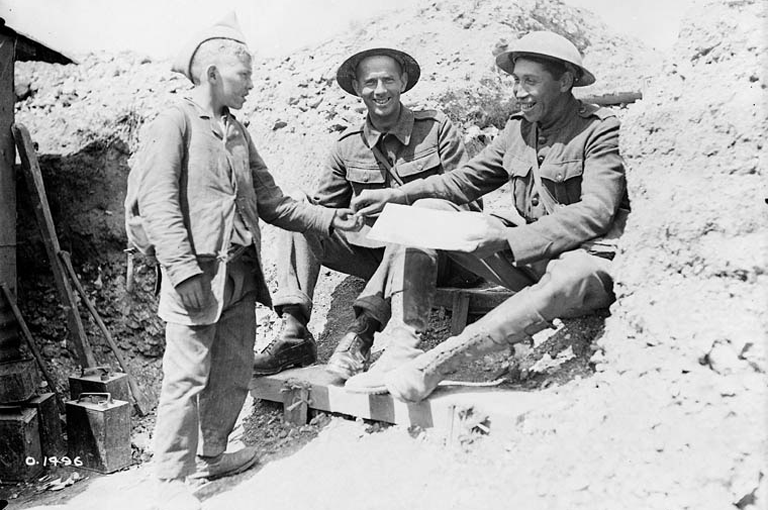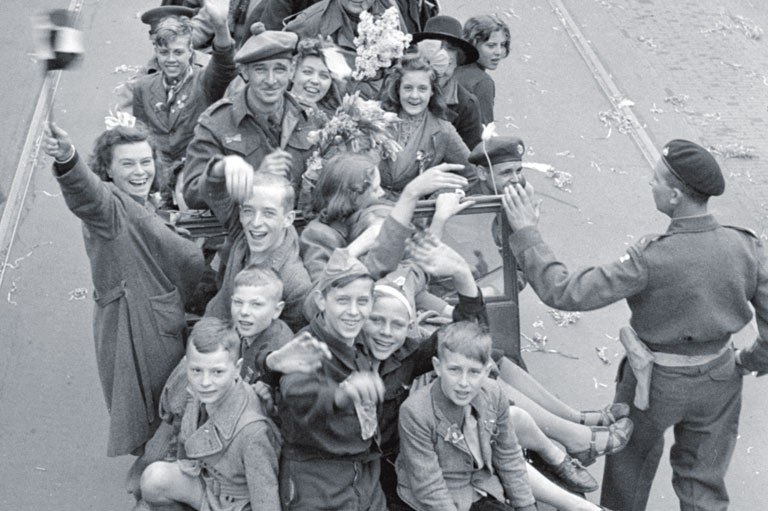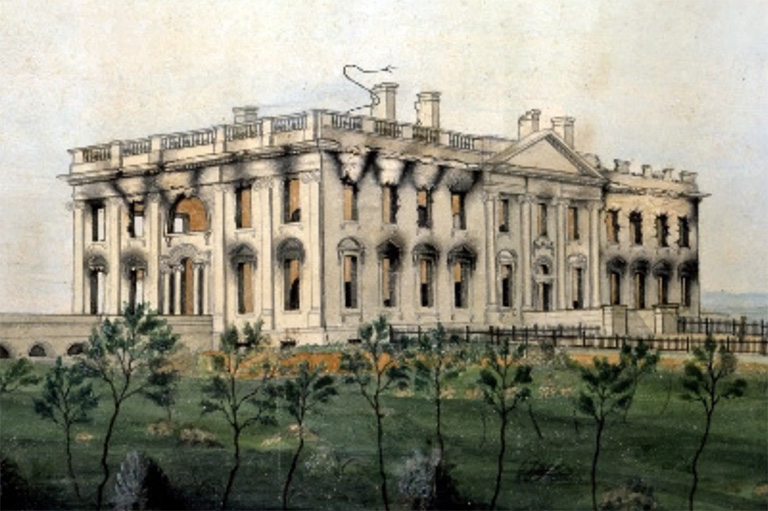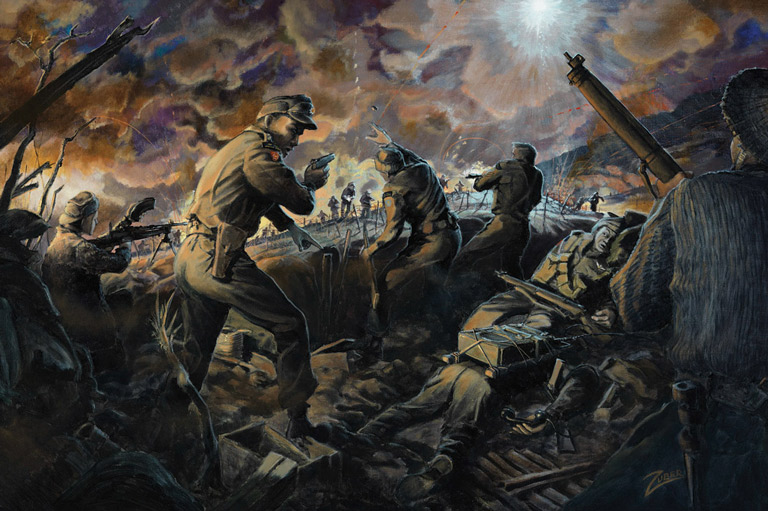The Devil's Brigade
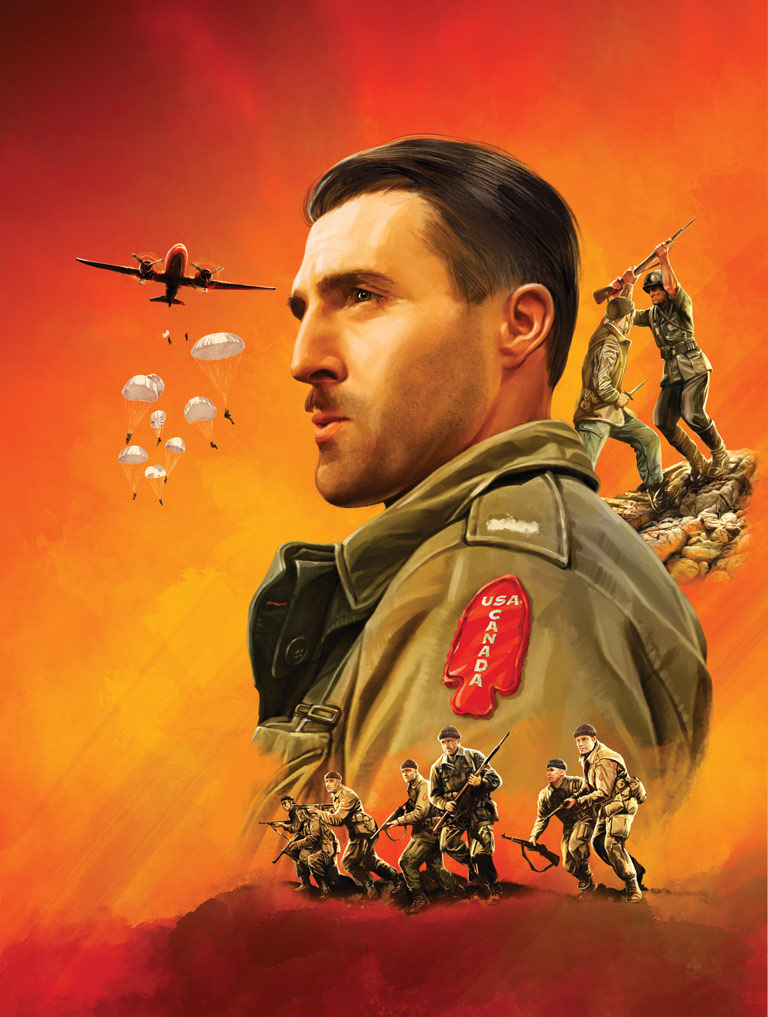
In Febraurary 1944, allied troops were stuck in a stalemate with German forces at the seaside town of Anzio, fifty kilometres south of Rome on Italy’s west coast. As German artillery battered the beachhead, seeking to drive the Allies into the sea, and as soldiers from both sides hunkered in muddy trenches rimmed with barbed wire, one daring group of Canadian and American commandos wrought terror among its Nazi foes.
In nighttime raids, soldiers of the First Special Service Force, or FSSF, slipped behind German lines and attacked Nazi positions. The clandestine forays kept the enemy off balance and enabled troops to gather intelligence on the locations of German forces. The night raids terrorized the enemy soldiers and deceived them into thinking they were up against a much greater force.
With 7 uniquely curated newsletters to choose from, we have something for everyone.
The FSSF night raids gave rise to the force’s famous nickname — the Devil’s Brigade — and contributed greatly to the postwar legend of the unit. As the story went, Allied troops had discovered the diary of a German officer in which he wrote of the threat posed by the “Black Devils” – a reference to the FSSF raiders whose faces were darkened with black boot polish.
Some historians believe that the tale of the captured diary was fabricated by FSSF officers as part of their psychological-warfare campaign against the Germans or as a way to improve morale among the commandos. But some from the unit insisted that the Germans used the Black Devils moniker.
Sergeant Victor Kaisner later told a historian that he heard a German soldier call out “schwarzer Teufel” — or black devil — as a commando was slitting the enemy soldier’s throat. “That really surprised us that he knew who was killing him,” Kaisner recalled.
Whatever the actual origin of the nickname, the unit’s commander, U.S. Colonel Robert Frederick, had cards printed up with the unit’s insignia and the message: “Das dicke Ende kommt noch! ” or “The worst is yet to come!” The calling cards were left by the commandos on the bodiess of dead German soldiers.
The First Special Service Force no longer exists, but its tradition lives on in the Canadian Special Operations Regiment – or CSOR, as it is commonly known in the Canadian Forces. CSOR soldiers talk with reverence about the legacy left by the men of the Devil’s Brigade, and the unit has been the subject of a Hollywood movie and numerous books.
But CSOR soldiers readily acknowledge that it’s difficult to hold a candle to the accomplishments of the FSSF veterans, who didn’t have the benefit of modern weaponry and technology. “They were far harder than we ever were,” said CSOR’s regimental Sergeant Major Dan Brissette when interviewed in 2011. “They would climb up mountains with hemp rope where you couldn’t even go near a mountain without a harness and a carabiner nowadays.”
Advertisement
The idea of the FSSF came from British planners during the early years of the Second World War. Their concept, originally code-named Project Plough, called for the creation of a special forces unit whose members could be dropped behind enemy lines for sabotage missions in Nazi-occupied Europe. The prime targets for such a force were hydroelectric dams in Norway, which were considered strategic infrastructure critical to the Nazi war effort.
Both the United States and Canada agreed to provide troops for the new formation. The call went out for volunteers from both nations, with recruiters looking for young single men who were used to working in the wilderness: Prospectors, miners, hunters, and lumberjacks were preferred.
Men came forward, some looking for adventure and a challenge, others prompted by their patriotism. Some, like Jack Callowhill and Gordon Sims, both nineteen, were already in the army. The two men soon found themselves with almost five hundred other Canadians on a train headed south, eventually ending up at Fort William Henry Harrison outside of Helena, Montana. There the Canadians, along with more than one thousand Americans, began training in earnest, and in July 1942 the First Special Service Force was officially activated. It would eventually consist of around eighteen hundred men, a little fewer than half of them being Canadians.
Mock-ups of hydro-turbines were built, and the troops practised demolition, mountain climbing skills, and operating in winter conditions. To get into Norway, the FSSF soldiers would be dropped by parachute, and the new recruits such as Sims and Callowhill found themselves jumping out of aircraft within days of arriving at Helena.
The newspaper headlines of the time heralded the force’s creation. “Super Commando Unit Formed,” announced the Winnipeg Free Press, while a page one article in the Globe and Mail was headlined “Hard-Hitting Joint Commando Unit.” Some officers in the U.S. War Department, however, saw the FSSF in a different light. Since there would probably be little chance of successfully withdrawing such a unit once the soldiers slipped behind enemy lines, they referred to the men as “sacrifice troops.”
The growing realization that the FSSF’s original behind-the-lines mission was untenable eventually led to the cancellation of Project Plough. Canadian senior military staff in Ottawa wondered whether the formation should be disbanded. At first, U.S. officers considered using the FSSF as a raiding force in the war then unfolding in the jungles on Pacific islands or as a light infantry unit to fight in the Mediterranean. Instead, the Canadian and U.S. militaries decided to include the FSSF among the more than thirty-four-thousand-strong invasion force whose job was to retake from Japanese troops the island of Kiska off the coast of Alaska.
In August 1943, the troops hit Kiska’s beaches, but they soon discovered that there were no Japanese anywhere on the island. The enemy had retreated a couple of weeks earlier under the cover of thick fog, leaving behind their gun emplacements and a few stray dogs. Despite the lack of combat, the invasion was seen as a good first test of the FSSF’s abilities under Frederick’s command. But it was still an elite force without a war. That would soon change.
By November 1943, Allied forces fighting in Italy were stalled in their attempts to seize a number of strategic mountains held by the Germans. One in particular, Monte la Difensa (sometimes spelled Monte la Defensa), had proven difficult, with enemy forces fighting off three different assaults. The FSSF arrived in Italy on November 17, 1943. A week later Frederick received his orders; his men were to take Monte la Difensa.
Interviewed in 2010, Sims, who served with Frederick in his headquarters, recalled the visit from a U.S. general who informed the men that he had heard about the FSSF — derisively dubbing it a group of “Hollywood commandos” — before giving the unit its orders to attack the mountain.
The plan called for the FSSF to seize Monte la Difensa and, in conjunction with other Allied units, push German troops off the surrounding peaks. But the Germans had the advantage. They were dug into caves and other fortifications on the 960-metre-high mountain. “It is very high and rugged and promises real difficulties in getting up even without German opposition,” the FSSF war diary noted before the battle.
Sims remembered his boss conducting the initial reconnaissance of the mountain himself, flying in a light aircraft over the peak to search for a way up. On the north face of Monte la Difensa, Frederick saw nearly vertical cliffs that were lightly guarded because the Germans thought them impassable. The FSSF would prove the Germans wrong.
On December 1 the commandos headed out in a light rain to get to the base of the cliffs. The following night, under the cover of darkness, two soldiers began to scale the near-vertical wall that led to the summit. It took Sergeant Harold Van Ausdale, an American, and Sergeant Tommy Fenton, a Canadian, several hours to make their way up the mountain, securing ropes for others to follow. An artillery barrage masked the sound of their climbing.
The soldiers of the main assault force, loaded down with ammunition and supplies, then began their ascent, climbing hand-over-hand on the ropes. Callowhill, interviewed before his death in 2021, said the strain was so great that, after the climb, he had difficulty straightening his hands back to their normal position.
Save as much as 40% off the cover price! 4 issues per year as low as $29.95. Available in print and digital. Tariff-exempt!
There are different versions of how the Germans became aware that the commandos had somehow climbed the mountain. One version is that Callowhill got kicked in the face by a climber above him, knocking his helmet off his head; the clattering noise of the steel lid bouncing down the cliff alerted the enemy. Another story holds that a shot had been fired from down below, alerting a German sentry who responded with a burst from his own machine gun. Whatever tipped off the Germans, the battle for Monte la Difensa was on. As dawn broke, the commandos climbed over the summit lip and launched their assault.
Callowhill recalled the fighting as a series of skirmishes, as each man seemed to be in a pitched battle of his own. The commandos spread out over the summit, some moving to the right, others to the left. Callowhill headed to the right. As the fighting raged, he found it impossible to determine what was happening. “It was just your own little corner,” he explained. “You didn’t know what the heck was going on.”
Fighting at close quarters, the Canadians and Americans tossed grenades into the bunkers and, at times, relied on their bayonets to kill enemy soldiers. Callowhill passed rifle grenades to one of his fellow soldiers, who kept firing the projectiles at the German positions. “I was firing at a few guys ... anything that was moving,” he recalled. He didn’t know if he hit anyone.
Within several hours the FSSF was in control of the peak, but the attack had taken its toll. A mortar round killed the leader of the assault force, Canadian Lieutenant Colonel Tom MacWilliam, while another key officer, U.S. Captain William Rothlin, died after being hit from a burst of machine-gun fire. The battle, however, wasn’t over. German mortars situated on surrounding summits started to pour fire down on the men. “The mortars for the next few days is what did a lot of our boys in,” recalled Sims, who operated from a headquarters at the base of the mountain.
The situation was dire. Callowhill said the assault force was running short of ammunition and water. Its radios weren’t working. The rain had started again, and the Germans continued their mortar fire. It was on the second day that Callowhill got hit by one of those barrages. He was trying to get under a rain poncho when the mortar bomb came flying in.
The explosion tore off the arm of a friend who was nearby. Callowhill’s body was peppered with more than one hundred pieces of shrapnel. It may have been the mountain’s hard rock, which broke up the metal pieces of the bomb into fine shards, that saved his life. “If it was bigger pieces I wouldn’t be here,” he said. Although he was severely wounded, the besieged force couldn’t take him down the mountain, so his fellow soldiers dragged him into a cave for safety.
Bringing out the wounded was a hazardous affair. It took eight to ten hours for six men to carry an injured soldier down the mountain, and some of the stretcher-bearers were killed by German mortar fire or snipers. The next day, stretcher-bearers managed to take Callowhill down the mountain, transferring him to an ambulance at the base of Monte la Difensa.
Back up the mountain, his comrades were still hanging on. Colonel Frederick summed up the situation in a message to an American general. His men were willing and eager, he wrote. But conditions were hard: “Men are getting in bad shape from fatigue, exposure and cold,” Frederick warned. “I have stopped burying dead and am collecting them for Grave Registration Service. German snipers are giving us hell and it is extremely difficult to catch them. They are hidden all through the area and shoot bursts at any target.”
During six days of fighting on Monte la Difensa, 73 commandos from the FSSF were killed, 9 declared missing, and 313 wounded. Another 116 were hospitalized for exhaustion. The casualties were almost a quarter of the unit’s combat strength. On December 8 it was relieved by U.S. units and sent down for a brief rest.
But the war in the Italian mountains, and the casualties, continued on Christmas morning when the commandos fought their way onto nearby Monte Sammucro. Fighting for such high points in the area continued well into January 1944, with both Americans and Canadians distinguishing themselves with acts of bravery.
One of those men, Canadian Sergeant V.J. Doucette, was later awarded a U.S. Silver Star for his assault on a series of enemy positions. The medal citation detailed how he first spotted a sniper and threw a grenade that killed the gunman. Doucette next led his platoon in attacking a German machine-gun nest, then attacked a second gun emplacement, before continuing to a third enemy position where he killed a group of Germans using his rifle and bayonet.
On January 9, 1944, the unit’s war diary recorded the toll from the continued fighting: 122 casualties, about half from frostbite and exposure. The next day the FSSF war diarist recorded: “News from the front is bad. The Force is being thrown into one action after another with only a handful of able-bodied men left and no sign of their being relieved.” Five days later the force was withdrawn from the mountains and allowed to reorganize as the U.S. Fifth Army held the captured territory and advanced to the next line of German defenses. But there would be little rest.
In early February, the FSSF was sent to the Anzio beachhead, just south of Rome, where it joined with other Allied units. Initial landings had been made at Anzio in late January, but a stalemate with German forces had developed.
It was at Anzio that one of the most famous members of the FSSF, Sergeant Tommy Prince, made his name. Prince, an Ojibwa from Manitoba, would slip behind enemy lines, sometimes leading fellow commandos but often operating by himself. The psychological cat-and-mouse games he played instilled terror among the Germans. Sometimes he would sneak into an encampment and slit the throats of enemy soldiers. Other times he would simply steal something from them before creeping back into the darkness.
In one of his lone patrols, the former lumberjack slipped into an abandoned farmhouse two hundred metres from a German position, and, using a field telephone, he directed artillery fire to destroy two enemy tanks. When the telephone line — which he had carefully laid out along the ground as he moved from the Canadian position — was severed by German mortar fire, Prince undertook a daring ploy. Under the gaze of enemy troops, and dressed like an Italian farmer, he walked out into the field where the telephone line had been cut. He stooped down, pretended to tie his shoelaces, and quickly repaired the line. Prince then calmly returned to the farmhouse and called in an artillery barrage that destroyed two more German tanks. For his bravery he later received the Military Medal from King George VI of Britain.
Advertisement
The fighting at Anzio amounted to more than just a series of nighttime raids. On February 10, 1944, the commandos captured the village of Sessuno, taking out German machine-gun emplacements with grenades and bazookas. Germans launched two counterattacks, forcing the men to retreat. Although the FSSF killed an estimated seventy enemy soldiers, six of the commandos died, and another ten were wounded.
On February 19, 1944, the recently promoted Brigadier General Frederick wrote to General Mark Clark, commanding general of the U.S. Fifth Army, to warn him that the combat strength of the FSSF had been so reduced by the fighting that it could not again take any major part in an operation, nor could it execute minor actions for any lengthy period.
“The successes the Force achieved in combat have been the result of special training and the development of certain qualities and spirit in the officers and enlisted men,” Frederick explained. But those specialized skills and esprit de corps had been developed by the lengthy and tough training that had been done back in Montana. Now the force was having trouble getting trained replacements for the men wounded and killed. As the stalemate at Anzio dragged on, the FSSF also found itself being used more often as conventional infantry, not as a specialized commando strike force.
At times, the men fought against German Tiger tanks with little but light weapons such as bazookas — and the cost was high. In one day alone against the tanks, thirty-nine commandos were killed. After Anzio, the FSSF was sent in June 1944 for several weeks rest in southern Italy and to prepare for a new mission. After spending months in various hospitals, Callowhill rejoined his unit, but he couldn’t convince doctors that he should go back into combat. Instead, he was assigned to train some of the men for their next operation.
That would be in the south of France, where small garrisons of German troops held on in fortresses on islands scattered along the coast. In August 1944 Operation Dragoon, the invasion of southern France, was launched, and the FSSF went into combat once again, seizing the German-held fortresses. While there were casualties, the toll was nothing like that from Italy.
Less than a month later the force was sent to the French-Italian border, with the unit digging in and facing off against German forces that still hadn’t lost the will to fight. Sergeant Tommy Prince’s scouting of the area was credited, in part, for the formation’s successful attacks on the Germans, and he was awarded yet another medal for his efforts, this time a U.S. Silver Star. But back in North America the debate over whether the FSSF should continue to exist was underway in headquarters in Ottawa and Washington.
Frederick himself had already voiced his doubts about the FSSF’s future in his February 19, 1944, letter to Clark, when he pointed out the unit was too battered to continue on effectively. In Ottawa, the generals also questioned the need for the FSSF. Reinforcements were scarce, as the war was entering its final phase. The FSSF was fighting in France, while the Canadian Army was in dire need of fresh troops for fighting in the Netherlands and, later, in Germany itself. The army needed regular infantry regiments, not a specialized unit, the generals argued.
On December 5, 1944, the order to disband the FSSF came down to the commandos as they stood at attention in a field near Villeneuve-Loubet in France. The Canadians were ordered to step forward and march past their American comrades. It was an emotional time for the men from both nations who had bonded in combat. “We got in front of our comrades, and they were all crying,” recalled Sims. “Next thing you know there’s tears rolling down our faces.”
The FSSF had officially ceased to exist, and the men were shipped out, either home to North America or to other battlefields. The toll had been high, but the force’s success great. One officer counted 401 members of the FSSF killed and more than 1,800 wounded. But in its one year of combat it was estimated that the force had killed twelve thousand enemy soldiers. Another seven thousand had been taken captive.
Once back in Canada, FSSF veterans didn’t have much time to look back on their sacrifices or to brood over losses. They needed to find jobs to support themselves and their families. Sims and Callowhill both said it was difficult to fit back into Canadian society. In the Army they received good pay and were in the company of close friends. They came back to a Canada where jobs were scarce and prices high. “All of a sudden we were back in this normal rat race, and it wasn’t very appealing,” said Sims.
Sims eventually went into marketing, settling in the United States, where he handled business affairs for various Canadian companies. Callowhill went back to his hometown of Hamilton, where he worked for thirty-seven years at a factory making cans. He still had shrapnel from the mortar round in his body.
Tommy Prince returned to Canada to find the same racist society he had left behind. Despite being a war hero, he — like all Indigenous Canadians of the time — was denied the right to vote and treated like a second-class citizen. Prince worked at a number of jobs before returning to the Army in 1950 to fight in Korea, where he further distinguished himself on the battlefield. But his was a tragic end. Destitute and an alcoholic, he ended up on the streets of Winnipeg, eventually pawning his war medals. He died in 1977 in a veterans hospital.
In the postwar years, the reputation of the FSSF as a daring formation that took on almost impossible missions at a high cost in lives only grew. That was partly due to a number of books on the unit, as well as the highly fictionalized 1968 Hollywood blockbuster The Devil’s Brigade.
In military circles, the legacy of the FSSF lived on. With the Vietnam War in the early 1960s, the American military created the Green Berets as the successor to the FSSF. In the postwar decades Canada had a number of specialized formations, ranging from a Special Air Service unit to the Canadian Airborne Regiment, which was disbanded in 1995 because of a scandal in which two soldiers tortured a Somali teenager to death.
The existence of such units has often faced opposition in the conventional military because of the money and resources they consume. There are also aspects of professional jealousy at play. Brigadier General Frederick saw as much with the FSSF. “Special units, such as this Force, are not looked upon with favor by other units of the Army,” he wrote in 1944. “There is an intense feeling of dislike arising from the belief that special units are particularly favored and that they receive too much credit for their accomplishments.”
The war in Afghanistan in the wake of the September 11, 2001, attacks on the United States was the impetus for the rebirth of Canada’s special forces. The country’s counter-terrorism unit, Joint Task Force Two, was sent to that South Asian country in December 2001 to fight against the Taliban, but as the war dragged on senior military officers decided that a much larger unit was needed. In 2006 the Canadian Special Operations Regiment, acknowledged in the Canadian military as the successor to the FSSF, was created. The regiment is now estimated to include at least seven hundred soldiers.
It’s difficult to make direct comparisons between the FSSF and CSOR. The FSSF, like the other Allied formations fighting in Europe during the Second World War, was up against the organized armies of nation-states Germany and Italy. It was brutal full-on combat under total war conditions, which the FSSF’s high casualty rates reflect. News reports at the time highlighted some of the unit’s achievements as well as the acts of heroism by its men.
In contrast, CSOR’s war in Afghanistan was conducted with intense secrecy. Its soldiers fought insurgents who wore no uniform and blended in with the local population.
At least one member of the unit was wounded in combat in Afghanistan, but CSOR didn’t release details. Another member, a logistics specialist, died in a non-combat incident. CSOR member Sergeant Andrew Joseph Doiron was killed in Iraq in 2015 in a friendly fire incident involving Kurdish forces.
Still, CSOR carries on the best traditions of the FSSF, a link embraced by the veterans of both units. Like the FSSF soldiers, CSOR commandos — all of whom volunteer to join the regiment — are trained in specialized skills such as demolition, rock climbing, parachuting, and winter warfare. FSSF veterans saw a lot of their old unit in CSOR — in the toughness of the troops, their quick-strike tactics, and, most of all, their attitude. And, like the FSSF, CSOR found itself on the front lines of combat shortly after it was created.
Today, a copy of the FSSF unit flag is prominently displayed in the main entrance of CSOR’s headquarters at Garrison Petawawa in Ontario. Also on display are mementoes from FSSF veterans, including one of the unit’s original fighting knives designed by Frederick.
Each year, U.S. and Canadian FSSF veterans are guests of honour at gatherings put on by CSOR soldiers and American Green Berets. But the number of veterans is dwindling. It is believed that only four Canadian and seventeen American veterans of the FSSF remain alive today.
Still, the legend of their unit and its accomplishments endures. “Everything we did was kind of being on the spectacular side,” said Sims. “We were the very first special service force.”
Themes associated with this article
Advertisement





